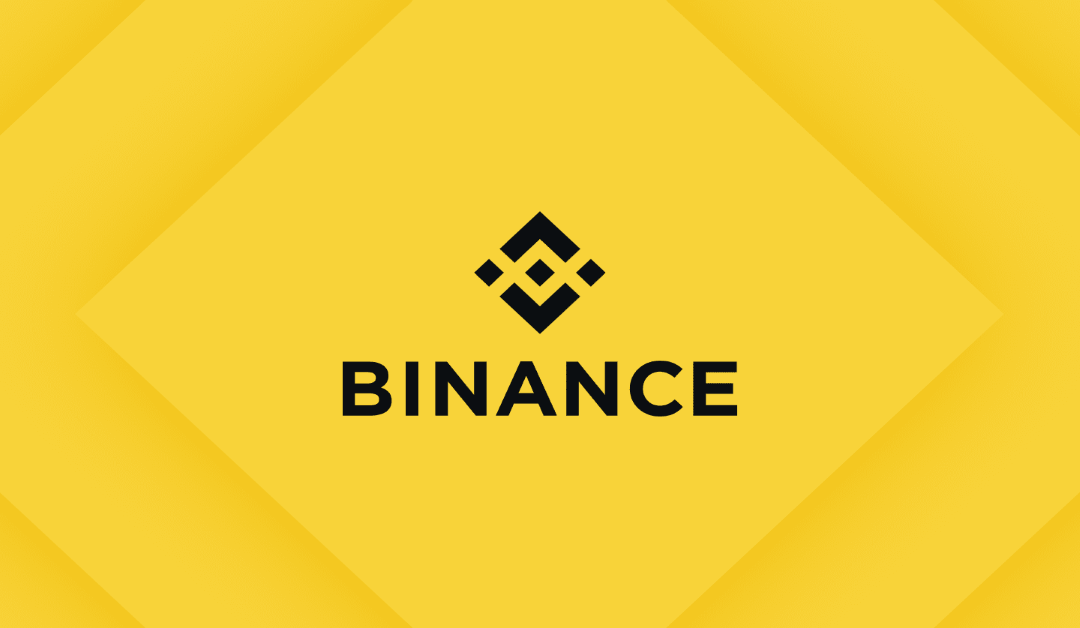
by Melissa Adams | Nov 10, 2023 | Blockchain
Key Points
- Bitcoin has broken an 18-month high by trading at over $37,500 on Nov 9.
- ETH has also been surging in prices, but so is its gas fees. Over the past 24 hours, it breached the $200 mark for given high-priority transactions, igniting debate on scalability issues.
Bitcoin and Ethereum are surging in price as the BTC halving countdown closes in. However, concerns are now rising over scalability issues as gas fees surge. Bitcoin network recently began being used for inscriptions and hosting other tokens; as a result, its scalability is now in question whether it will be able to handle the demands as a bull market may be close.
Are bull market issues beginning once more?
Crypto market cycles have been seen to follow four years of Bitcoin halving. This time, it’s not any different. The crypto market is recovering fast from the heavy bear market that began towards the end of 2021 as Bitcoin’s halving countdown continues clocking. It’s now only 190 days left till the halving is done, and Bitcoin has already registered a new 18-month high.
However, concerns are rising over its scalability issues. Bitcoin network has been upgraded to support ordinal inscriptions, and new token standards have been introduced, allowing it to have ecosystems built around it. As a result, the network will be required to settle even more transactions than ever before.
In past bull cycles, the Bitcoin network has been subject to high gas fees, though not as high as Ethereum. Ethereum has undergone new improvements in its scalability issues via the transition to the POS mechanism. However, this transition was confirmed not to have very significant changes to the network’s gas fee challenges just yet.
Over the last 24 hours, crypto users started circulating screenshots of $220 gas fees required to settle a high-priority transaction on the Ethereum network, while others showed one with a $100 mark. On the Bitcoin matter, at the same time frame, the average Bitcoin gas fees hovered around $10 while it had been around the $1 mark for the past three months.
This material is meant for educational and recreational purposes only. It is not financial advice in any way; therefore, damage caused by the information provided here is not liable to the company or the writer in question. Please make due diligence and conduct your own research before taking any action prompted by the information provided above.
For more resources like this one, keep watching our website and remember to follow our socials to stay ahead of the curve. Thanks for believing in us. Your support is appreciated.
X.com Linkedln Truth Social Reddit
Do you like our content and would love to support us more? You can use these addresses.
Ethereum: 0xe6814Bf3B50691BC1697E4B2717f5d204b67C7f6
Bitcoin: bc1qpeuuw7szfdkqd7hp66uhkas4huha8qkwxdgxtg
BNB Chain/BEP 20: 0xe6814Bf3B50691BC1697E4B2717f5d204b67C7f6

by Melissa Adams | Sep 25, 2023 | Cryptocurrencies
Key Points
- Michael Saylor’s MicroStrategy has acquired an additional 5,445 BTC at an average price of $27,053 per Bitcoin.
- The company now holds 158,245 BTC worth over $4.68 billion purchased at an average price of $29,582 per bitcoin.
MicroStrategy has continued with its Bitcoin buying spree as it acquired an additional 5,445 BTC, taking its total tally to 158,245 BTC.
MicroStrategy continues investing in Bitcoin
MicroStrategy indicated in August via a court filing that it was preparing to buy more bitcoin from the sale of shares. At the time, it had added 14.5 million USD worth of Bitcoins two months after buying a whooping 12,333 BTC.
With its most recent purchase, the company now holds over $4.68 worth of Bitcoin and is still expecting to keep buying more. Michael Saylor has been vocal about Bitcoin and its role in the global financial landscape, insisting that it is the solution to the increasing loss of value in fiat currencies.
He led MicroStrategy to first buy Bitcoin in 2020, where he was bashed after the company made significant unrealized losses on its investments. However, the company has continued “filling its bags” till now, where every of their coin is in profits.
Saylor is a staunch believer in the revolutionary power of the crypto industry, and under his leadership, it is expected that MicroStrategy will continue investing in Bitcoin and supporting it. Keep watching Fintech Express for more updates on this and other fintech-related developments.

by Melissa Adams | Sep 20, 2023 | Cryptocurrencies
- Stanford University has indicated that it intends to reimburse millions to FTX after confirming illegal donations by Sam Bankman Fried.
- FTX legal counsel has increased efforts to crawl back all donations that were made by EX-CEO Sam Bankman Fried using customer deposits
Stanford University has confirmed receiving donations from FTX for pandemic-related prevention and research but will fully refund it. The institution is complying with calls from FTX liquidation officials to refund the money which had been part of customer deposits.
FTX continues ploughing back illegal donations
FTX, under Sam Bankman Fried’s leadership, had dished out multiple donations, which are alleged to have come from customer deposits. The CEO sought political and other strategic allies, giving out those donations.
Following the collapse of the multi-billion dollar company, it has been understood that there were a lot of fraudulent activities and mismanagement of customer funds, which has hurt customers and creditors. While Sam Bankman Fried is facing charges in the United States, FTX is under a liquidation process to repay its creditors and refund customer deposits.
As part of the repayment process, the current leadership has moved to reclaim all donations made illegally. The California-based institution, Stanford University, falls in the entity category that is to refund all donations issued to them.
The university received $5.5 million between November 2021 and May 2022. In a Sept. 19 email, the institution’s spokesperson said that its administration had been discussing with FTX legal counsel to recover the gifts received and intended to refund the defunct exchange.
Similar efforts and reports of donations being ploughed back are still expected to happen with time as the FTX debtor’s legal counsel seeks to gather as much funds as possible from the liquidation process. Keep watching Fintech Express for more updates on crypto and other fintech-related fields.

by Melissa Adams | Aug 23, 2023 | Regulation
Key Points
- Binance.US has scored another win after securing a partnership with MoonPay after having its US bank ties severed.
- The exchange was on the spot after a lawsuit from the US SEC, prompting the banks to draw away from it as preventive measures.
Binance.US has scored another win after partnering with MoonPay to restore USD deposits and withdraws. The platform had lost its USD ramps due to the US SEC lawsuit.
Relief for Binance.US as it lands a new banking ramp
Binance.US had abandoned its USD banking partners after the US SEC pressed charges against it. As a result, it was forced to suspend all USD withdraws and deposits; however, customers could still switch their USD balances to other currencies and withdraw them.
The platform is now operating as a crypto-only trading exchange despite being on a legal tuff with regulators in the country. It has announced a new partnership with MoonPay to allow its users to buy USD-pegged Tether USDT stablecoin that can be used on its platform for trading purposes.
It announced on August 22 that USDT is selected as the base asset for all transactions between it and MoonPay, creating a path for trading using USD.

by Melissa Adams | Aug 23, 2023 | Finance
Introduction
As an investor, it’s good to understand the crucial role venture funds play in the world of finance and innovation. This article delves into the realm of venture funds, exploring their definition, importance, and the profound impact they have on driving innovation and fostering economic growth.
Understanding Venture Funds
Venture funds, also known as venture capital funds, are investment vehicles that pool money from various sources, such as high-net-worth individuals, institutional investors, and corporations, to invest in early-stage and high-growth companies. These funds are managed by experienced venture capitalists who identify promising startups with high growth potential and provide them with funding in exchange for equity ownership.
Why Venture Funds Matter
- Fueling Innovation: Venture funds play a pivotal role in nurturing innovation by providing crucial funding to startups that are often too risky for traditional lenders. This support allows entrepreneurs to develop groundbreaking technologies, products, and services.
- Early-Stage Funding: Startups often face difficulty obtaining funding from traditional sources due to their unproven track record. Venture funds bridge this gap by injecting capital into early-stage companies, enabling them to bring their ideas to life.
- Job Creation: The startups funded by venture capital often grow rapidly, leading to the creation of jobs and opportunities in various sectors. This job creation contributes to local and national economic development.
- Risk Mitigation: Venture funds help diversify investors’ portfolios by allocating a portion of their capital to high-risk, high-reward ventures. This diversification strategy can help mitigate losses from other investments.
- Expertise and Guidance: Beyond financial investment, venture capitalists provide valuable mentorship, industry expertise, and networking opportunities to startups, enhancing their chances of success.
Venture Fund Lifecycle
- Fundraising: Venture funds raise capital from investors by showcasing their investment strategy, track record, and potential for high returns.
- Deal Sourcing: Venture capitalists actively search for startups that align with their investment criteria and show promise for substantial growth.
- Due Diligence: Extensive research is conducted on potential investment opportunities to assess their viability, market potential, and management team.
- Investment: Funds are invested in selected startups in exchange for equity ownership, with the aim of supporting growth and expansion.
- Value Addition: Venture capitalists provide strategic guidance, mentorship, and resources to help startups scale and succeed.
- Exit Strategy: Venture funds aim to exit their investments through avenues such as initial public offerings (IPOs) or acquisitions, realizing returns on their investments.
Risks and Challenges
- High Risk: Venture capital investments are inherently risky due to the uncertainty associated with startups’ success and market acceptance.
- Liquidity Concerns: Investments in startups are illiquid and may take years to yield returns, potentially tying up capital for extended periods.
- Market Volatility: Economic downturns can impact the success of startups and the ability of venture funds to exit their investments profitably.
Conclusion
Venture funds are the driving force behind innovation, transforming innovative ideas into successful businesses that contribute to economic growth and job creation. By providing much-needed capital, expertise, and guidance to startups, venture funds serve as catalysts for technological advancement and disruption. This understanding can guide investors, entrepreneurs, and policymakers in making informed decisions that foster a dynamic and prosperous innovation ecosystem.





